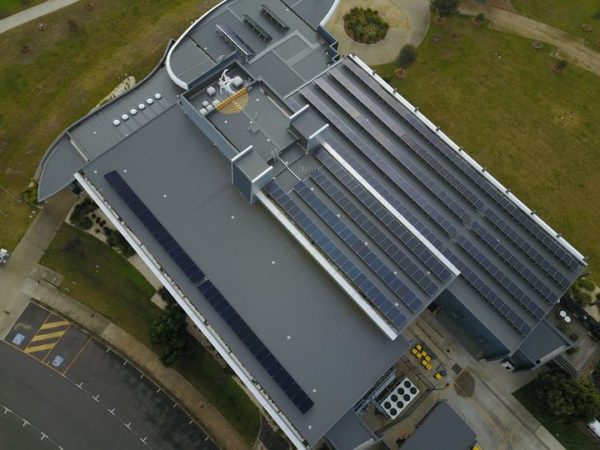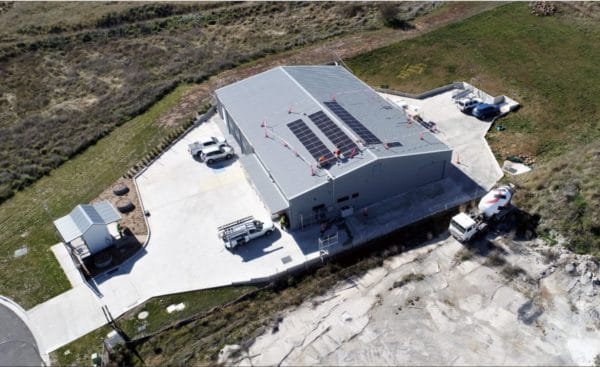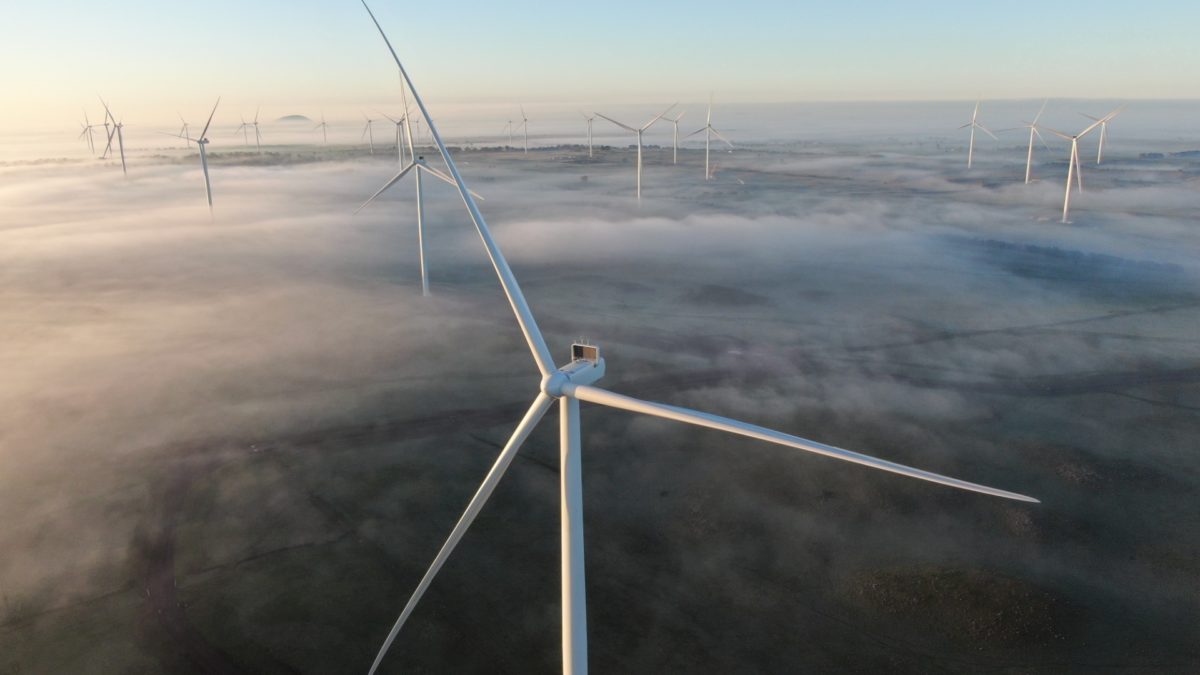The Victorian Energy Collaboration (VECO) will see 46 of Victoria’s 79 local councils powered by renewable energy with Melbourne-based energy retailer Red Energy, an offshoot of the Federal Government-owned Snowy Hydro, signing an agreement to supply the councils with a combined 240 GWh of renewable energy each year until the end of 2030.
Spearheaded by Darebin City Council, in Melbourne’s north, and facilitated by the Victorian Greenhouse Alliances, VECO will deliver enough renewable energy to power the participating councils’ energy needs.
The energy will be provided by Tilt Renewables’ 336 MW Dundonnell Wind Farm near Mortlake, which started exporting power to the grid in March 2020, and the Murra Warra II Wind Farm near Horsham.
The 209 MW Murra Warra II Wind Farm, owned by Swiss investment manager Partners Group, is currently under construction and is expected to be fully operational by June 2022. Snowy Hydro has already signed off-take agreements with both wind farms.
“This is a bold, visionary project that pushes the boundaries of what was thought possible for local government,” Darebin Mayor Lina Messina said.
“There is no box this project doesn’t tick – it tackles climate change, cuts energy bills, invests in Victorian businesses, and grows jobs in regional Victoria.
“By powering our council buildings and streetlights with affordable renewable energy, we’re making ratepayers’ dollars go further. Every dollar we save on energy bills is a dollar we can put towards improving our roads, footpaths, libraries or community programs.”
Councils count on savings
While savings will vary across councils based on their individual energy needs, VECO is expected to save councils up to 35% on their electricity bills.
The 240 GWh of clean power will deliver 45% of the state’s annual local government electricity demand, equivalent to powering 48,000 homes with renewables. The project is expected to save 260,000 tonnes of carbon dioxide emissions every year.
The majority of the councils will make the switch to renewable energy by July 1 with the initial contract to run for 9.5 years.
Greater Geelong Council is Victoria’s largest council and is among those participating in the initiative.
Mayor Stephanie Asher said by joining VECO, the city would use renewables for 100% of its energy use, saving up to 22% on its electricity bills.
“This long-term deal will power our street lights, libraries and council facilities while reducing emissions and keeping costs low,” she said.
Jenny O’Connor, mayor of Indigo Shire in the state’s north east, said the project sends a strong message that local government is serious about tackling climate change.
“This is a fantastic initiative that will have far reaching benefits, not just for the environment, but also in cost savings for our community,” she said.
Red Energy CEO Iain Graham said the retailer is excited to be part of the project.
“Our owner Snowy Hydro has been a leader in renewable generation for decades and Red Energy is delighted to partner with Victorian councils to provide a long-term energy contract that will enable councils to purchase renewable energy at a competitive price,” he said.

Image: SCC
For the Surf Coast Council, the launch of the VECO initiative came just days after it had announced it would expand its rollout of solar modules across council buildings.
Surf Coast Councillor Kate Gazzard said rooftop systems would be added to another nine sites as part of the Solar Installations On Council Buildings Project.
“Council has a strong record of installing solar at its facility to reduce its costs, and our corporate greenhouse gas emissions,” she said.
“It’s fantastic to expand this program to include further community buildings which have incredible capacity to feature this kind of green technology.”
Solar PV systems will be installed on nine facilities including the Torquay and Winchelsea Senior Citizens centre, Moriac Community Centre and Anglesea Kinder.
They will increase the council’s solar PV capacity to more than 570 kW.
Renewables spread interstate
Victorian councils are not the only local governments turning increasingly to renewables with Orange City and Broken Hill councils in New South Wales both making announcements in recent days regarding their renewable energy commitments.
Kidd the council had pledged to ensure best-practice use of renewable energy options in its Community Strategic Plan 2018-2028.
“Through consultation, we found the community felt strongly about being more sustainable by promoting renewable energy,” he said.
“Installing solar panels on council assets was one of the strategies chosen to achieve this goal and funding of $500,000 towards renewable projects was allocated in the budget every year for three years, starting in the current financial year.”

Image: OCC
The Orange City Pound will be fitted with a 15.9kW system at a cost of $20,500, a 99 kW system, priced at $89,500, will be installed atop the Civic Centre, while the existing system at the Orange Aquatic Centre will be doubled in size, receiving a further 99 kW system at a cost of $143,800.
Broken Hill Council is also pursuing solar PV, recently adopting a Renewable Energy Action Plan with an aim to increase the use and availability of sustainable energy.
Councillor Kathy Graham said council is looking to construct a medium-scale solar array to increase renewable energy in the city, and commit to a long-term goal of the city being 100% powered by renewable energy by 2030.
“Companies are moving ahead with plans to create large energy storage facilities around Broken Hill, and if we had our own means of producing renewable energy we could leverage off these projects,” she said.
“The goal is to take council’s entire operation off the grid.”
Council has set aside $50,000 in the draft 2021-22 budget to establish the array’s potential size and prepare a shortlist of viable locations.
“Obviously we’re extremely early in the initial planning stages for this project, but it has the potential to make Broken Hill a national leader in the utilisation of renewable energy,” Graham said.
Broken Hill Council will hold information sessions at the Civic Centre on Friday, May 21.
Councils commit to clean energy
The 46 VECO councils are: Alpine Shire, Ararat Rural City, Ballarat City, Banyule City, Bass Coast Shire, Borough of Queenscliffe, Brimbank City, Buloke Shire, Cardinia Shire, Campaspe Shire, Central Goldfields Shire, City of Greater Dandenong, City of Greater Geelong, Darebin City, East Gippsland Shire, Glen Eira City, Golden Plains Shire, Greater Shepparton City, Hepburn Shire Council, Greater Bendigo City, Horsham Rural City, Indigo Shire Council, Loddon Shire, Macedon Ranges Shire Council, Manningham City, Maribyrnong City, Maroondah City, Melton City, Mildura Rural City, Moira Shire Council, Monash City, Moonee Valley City, Mount Alexander Shire, Pyrenees Shire, South Gippsland Shire, Stonnington City, Surf Coast Shire, Strathbogie Shire, Swan Hill Rural City, Warrnambool City, Wellington Shire, Whitehorse City, Whittlesea City, Wodonga City, Wyndham City, and Yarra Ranges Shire.
This content is protected by copyright and may not be reused. If you want to cooperate with us and would like to reuse some of our content, please contact: editors@pv-magazine.com.









5 comments
By submitting this form you agree to pv magazine using your data for the purposes of publishing your comment.
Your personal data will only be disclosed or otherwise transmitted to third parties for the purposes of spam filtering or if this is necessary for technical maintenance of the website. Any other transfer to third parties will not take place unless this is justified on the basis of applicable data protection regulations or if pv magazine is legally obliged to do so.
You may revoke this consent at any time with effect for the future, in which case your personal data will be deleted immediately. Otherwise, your data will be deleted if pv magazine has processed your request or the purpose of data storage is fulfilled.
Further information on data privacy can be found in our Data Protection Policy.